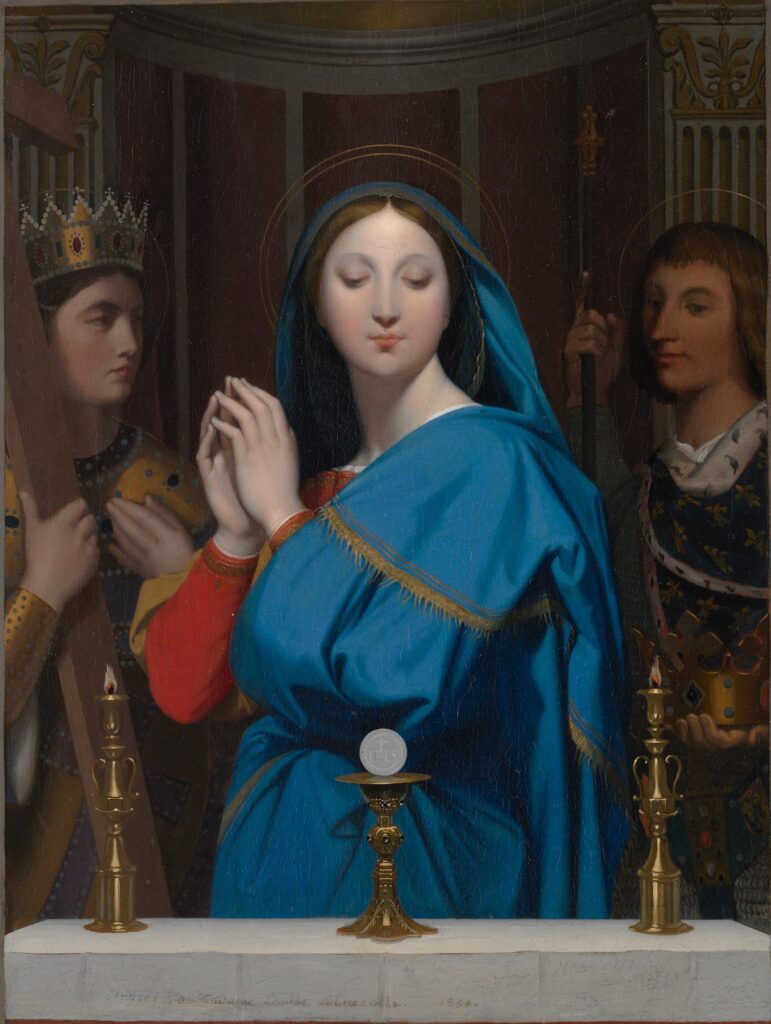A Biblical verse that can kind of haunt you, if you’re a teacher, says, “for he taught them as one having authority, and not as their scribes.” (Matthew 7:29) I have this image of someone proclaiming with great fervor: “for he taught them as one having authority, and not like that tedious, boring Prof. Smith.” I feel bad for the scribes. I mean, how do you compete with Jesus? You’re a scribe (or professor); you work hard; you study for hours on end; and then people think less of you because you were outshined by God incarnate? Am I supposed to feel bad if Michael Jordan beats me in basketball too?
To be fair, Christ says later of the scribes: “do whatever they teach you and follow it; but do not do as they do.” Okay, now that’s good advice. And then there’s His warning: “you are not to be called teacher.” (Matthew 23:8) Okay, I’m called professor. But that’s probably worse.
Søren Kierkegaard once compared Socrates and Christ by noting that while Socrates claimed to be a “midwife” of truth, midwifing his students to give birth to the truth inside themselves – which is what we human teachers are supposed to be and do – Christ is “the Truth.” In His teaching, there is a dramatic unity between the teaching and the teacher. Christ is the heart of what is being taught. So, for this reason, we human teachers can never measure up to Christ. He has “authority” because He is the Author of all Creation. I merely talk about God; He is God. Thus everything I teach should point to Him.
But if He is the Author of all Creation, then it’s not just in theology that we are ultimately talking about God. What is revealed to us in the Genesis Creation accounts and confirmed decisively by the Incarnation is that all creation is “incarnational” or “sacramental”: it is an embodiment and an instrument of God’s love.
So while it is certainly not the case that theologians should tell chemists, biologists, or physicists how to do their work, it is acceptable for teachers in all these disciplines to remind students that they are studying the handiwork of God, written, as it were, in the Book of Nature. Thus a Christian would never fudge the data of science for his or her own gain or glory because this would be to lie about what is in the Book of Scripture.
So when a student says to me, “I hate math,” I say: “But one of the languages of the universe is mathematics. It is the language God uses to help us understand the order of things. If you have ever wanted to learn Greek so that you can read the Gospels in the original language, don’t you want to be able to translate the language of God imbedded in Creation?”

Take a string on a guitar and pluck it. It makes a note. If you put your finger halfway down that string and pluck it again, that note is an octave higher. The pitch on a vibrating string is directly proportional to its length. Music is math. Rhythm is math. Rhythm describes the repeating pattern of strong and weak beats in any piece of music. The man who created the system that lets sound engineers make the singer’s voice sound pitch-perfect, now ubiquitous in music studios, worked it out mathematically.
The order with which God has created the universe is really amazing once you start to see it. It’s like one of those huge puzzles with little pieces each of which has some lovely colors, but they don’t really make sense until you start to fit them together and you realize what an incredible picture they make.
And it is for this reason, among others, that the Eucharist should be at the center of every Catholic school – not because on top of all the school’s secular stuff, you need a little “religion.” That sort of two-tiered system falsifies the incarnational character of Creation. When St. Bonaventure wrote a text that we call The Reduction of the Arts to Theology, he did not mean that every discipline should be “reduced” into theology. In Latin, re-ducere means “to lead back to.” So he meant that all study should “lead back to” God.
The visible things of Creation, in this view, are like handwritten letters from God. Who among us who has known the love of a beloved would simply toss out a handwritten letter from our beloved? We read it, save it, and read it again and again as if to put the beloved in our presence, if merely in this small, indirect way. What we need to teach our students is that what looks like the indistinguishable white envelopes of Creation are really letters from their Beloved. And so they should open them carefully and lovingly so they can find the communications of love they contain.
And yet, although letters can be wonderful, love is best delivered in person. If letters from your beloved are wonderful, who wouldn’t want to visit the beloved in person? The two aren’t mutually exclusive. I see my wife in person every morning (thank God), but this doesn’t make notes from her throughout the day any less meaningful.
In classes, we talk about God. Or we talk about God’s handiwork in Creation. But in the Eucharist, God comes to us in person, in the person of Jesus Christ, crucified and risen. So we take students to Mass not so they can have a little “religion” before they go back to the “real world” stuff. We take students to Mass so they can encounter their Creator and His love “incarnate,” in person. And in that encounter, remind themselves that they are loved and in all their studies, they are reading love letters from the One who loved them so much He was willing to die for them.















